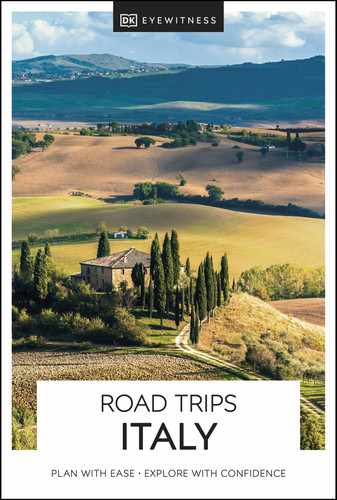g Contents
Where to Eat
One of the greatest pleasures of travelling in Italy is discovering the vast variety of delicious food and wines available. Whether a sophisticated trattoria or a simple pizzeria, restaurants rarely serve anything other than Italian specialities and it is not necessary to spend a fortune to find good food. Each drive provides the chance for visitors to sample regional specialities: whether it be the fish and pine-nut delights of Liguria, the black truffles, hams and salamis of Umbria or the classic Mediterranean vegetable and lamb dishes of the south. Below is a basic guide to the typical kinds of eating places you will find in Italy.
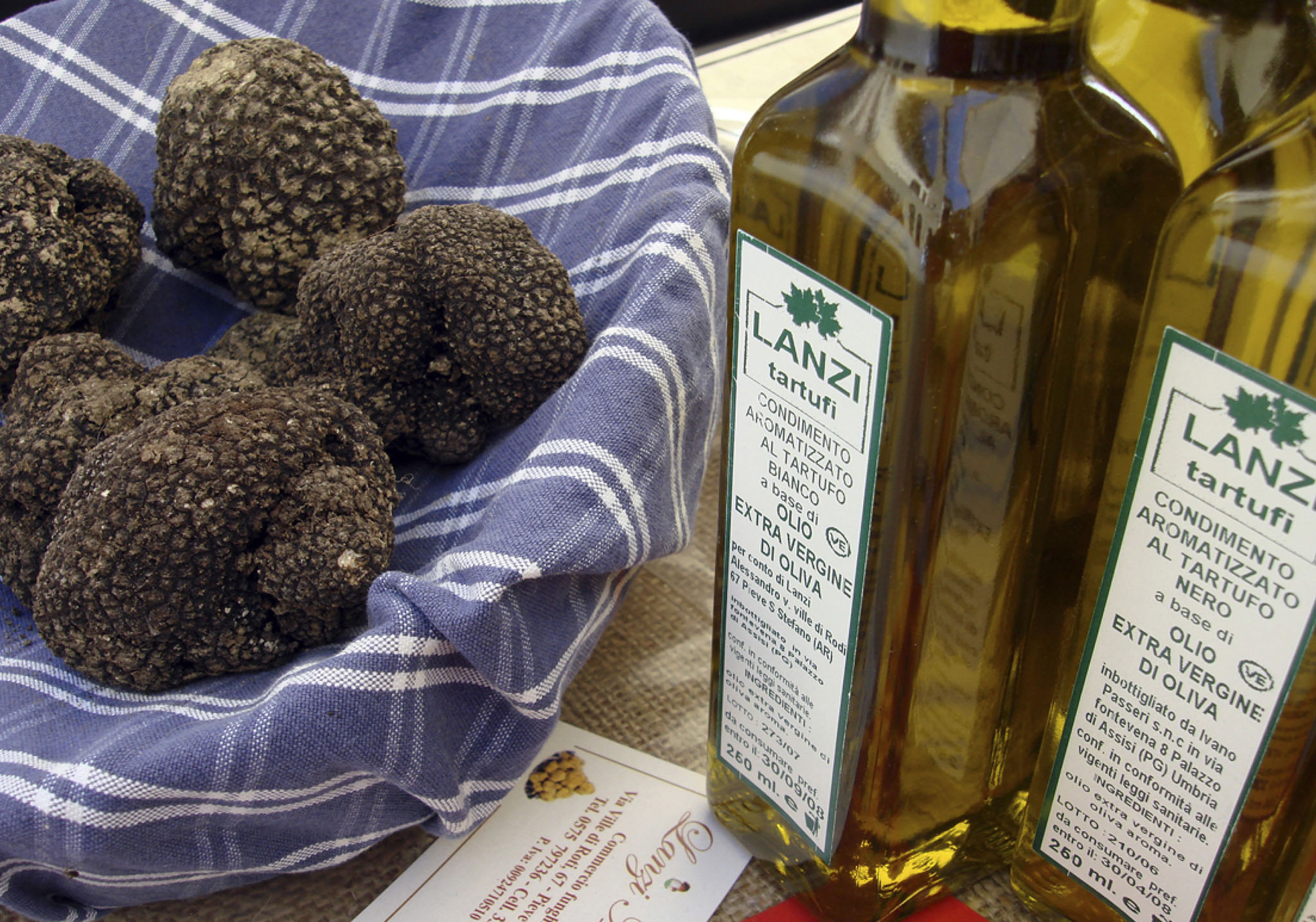
Black truffles at the Sansepolcro market
Practical Information
Breakfast is usually a croissant (cornetto) and coffee taken in a bar. The coffee available comes in a staggering variety of styles from un caffè, a sharp shot to long and milky latte macchiato. An espresso diluted with hot water to make it resemble American filter coffee is an Americano, and an espresso with a blob of frothy milk is a caffè macchiato. In summer, there is usually iced coffee, caffè freddo.
The main meal is lunch, normally served in restaurants from noon until 2pm, though in summer resorts most restaurants keep their kitchens open right through to dinner. Dinner is usually served from 8pm to 10:30pm. Most restaurants are closed one day a week and display their giorno di chiusura in the window. In holiday resorts, restaurants are normally open between Easter and October. Outside those months, you could easily arrive and find nowhere to eat.
In cities and major towns credit cards are widely accepted, but in smaller places and in the country it is wiser to carry cash. Tax and service are included in the bill by law, and there is often a small cover charge (coperto). Tipping is becoming more common and 10 per cent is usual.
Italians rarely dress down, so dressing reasonably smartly will fit the bill. Only in the most exclusive restaurants is dress formal, and men required to wear a tie and jacket. Children are welcome (and common) in restaurants, even late at night.
Meals begin with an antipasto, or starter, followed by the primo, or first course, most commonly pasta, risotto or, in winter, a minestra (hearty soup). The secondo is the meat and fish course, with the contorno (vegetables or salad) usually served on a separate dish alongside. Finally there is the dolce, or dessert. House wines can vary in quality from region to region. Local wines are always on the menu.
Ristoranti, Trattorias and Osterias
These are the three main terms for a restaurant in Italy, and until some years ago they were quite distinct. A ristorante was a “proper” restaurant, with linen tablecloths and waiters in uniform. A trattoria was usually a more basic, homely sort of place: the menu was often scrawled on a blackboard and there were sheets of paper to cover the tables and on which to write the bill. Osterias were unpretentious country or city hostelries, offering a few cold cuts and cheese, and maybe a simple pasta dish to accompany a glass of the local wine. However, that has all changed and the choice of name for an establishment these days depends more on the tradition the place identifies with, rather than price, decor or ambience. Ristorante is now a neutral, generic term that could apply to anything from a Michelin-starred mecca to a seaside joint where mass-catering is the order of the day. Although there are trattorias and osterias that have existed for half a century, today the terms can as easily apply to the best restaurant in town: trattoria often implies an interest in reviving and reinventing traditional dishes; osteria that there is an emphasis on sourcing the very best primary ingredients and wines, as promoted by the Slow Food movement, and, often, a rather more minimalist/non interventionist approach to cooking.

Sign for a Cinque Terre restaurant offering typical seafood cuisine
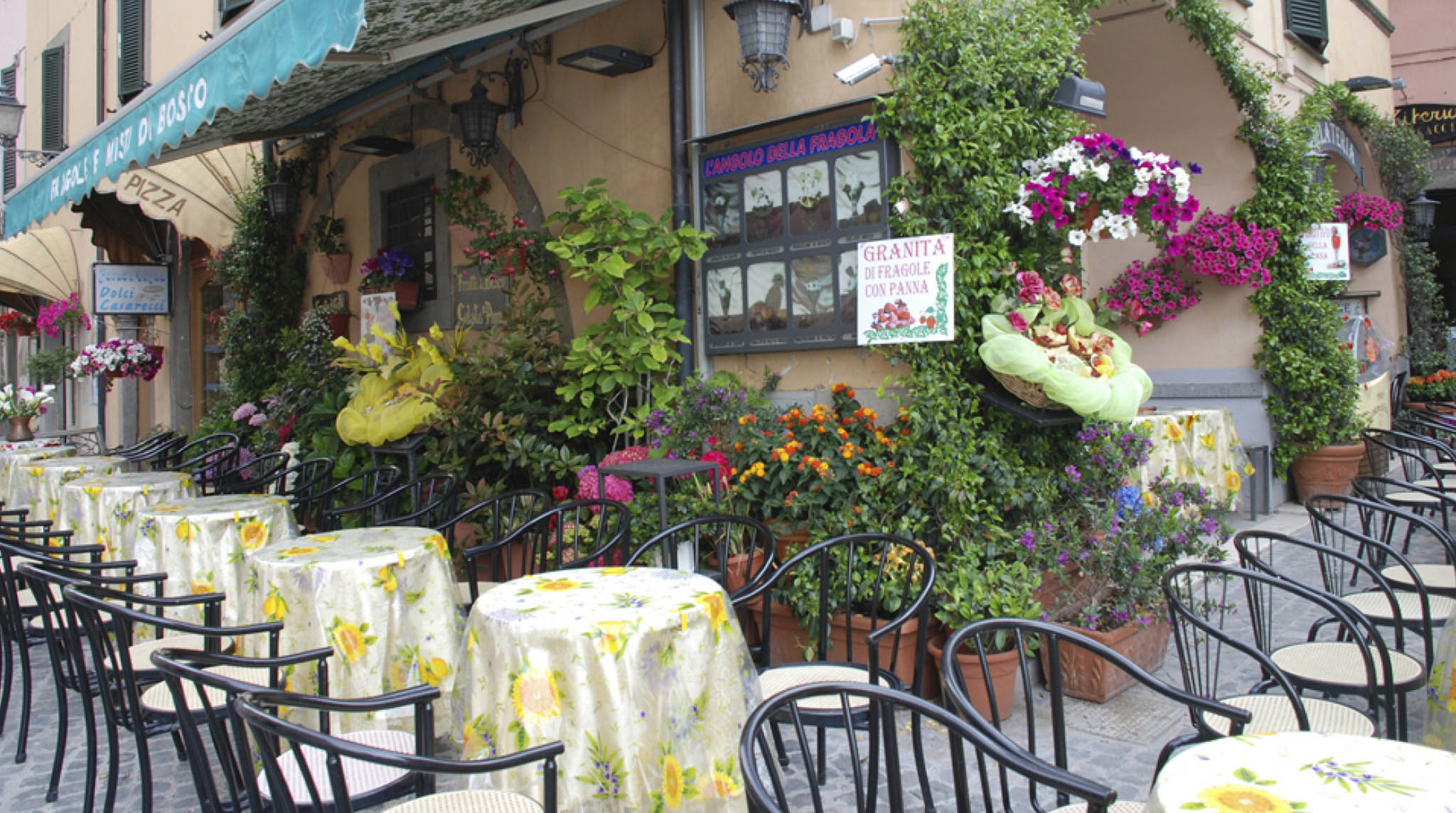
Gelateria in Nemi selling ice cream made with local strawberries
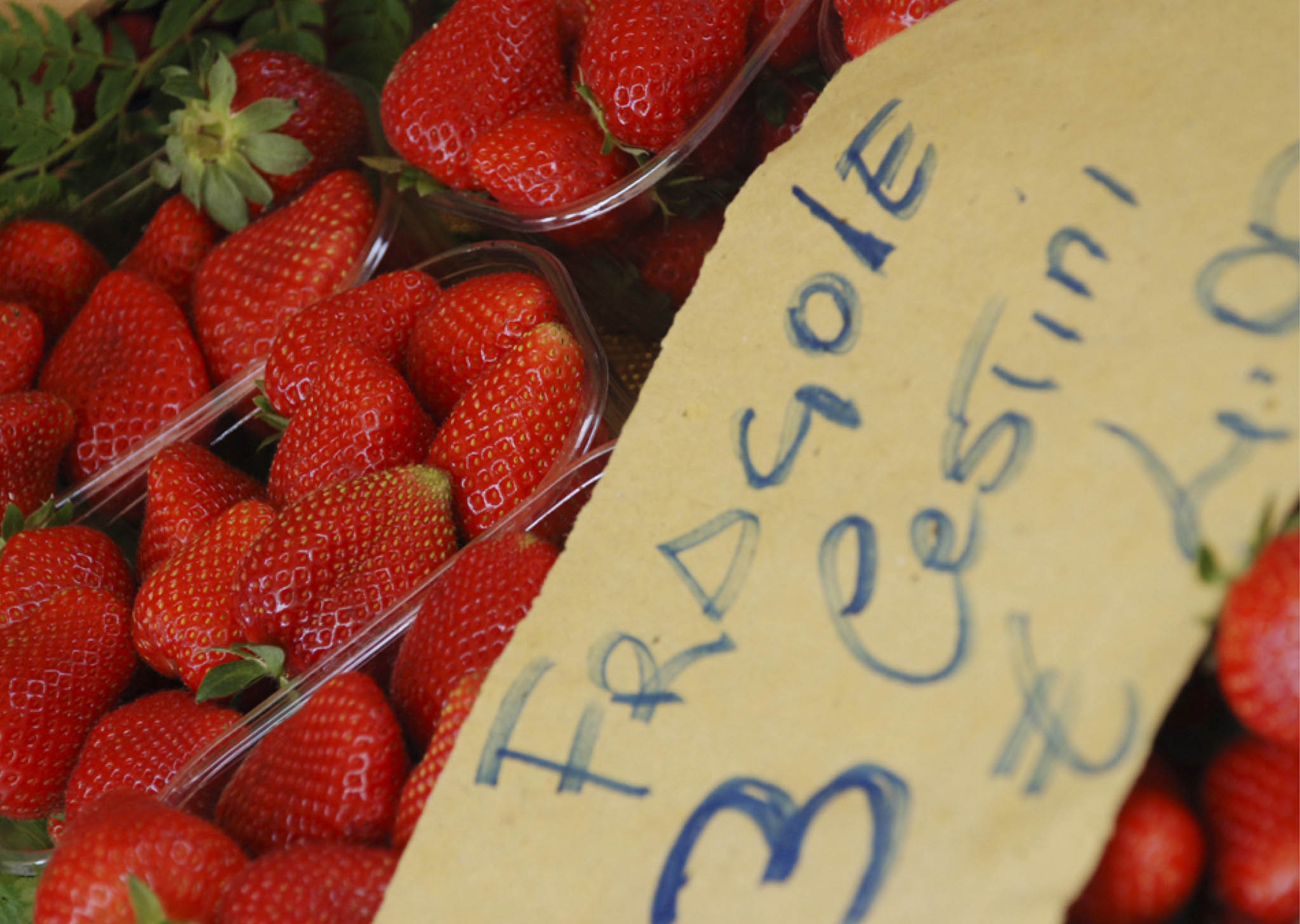
Strawberries for sale at Nemi
Pizzerias
Pizzerias are found throughout the country, and, contrary to popular myth, it is only too easy to find doughy, substandard pizza. You have more chance of striking gold if you go to a pizzeria with a wood-burning oven (forno a legna) from which the pizzas should emerge bubbling, scorched and blistered. Pizzerias are almost always informal places, and pizza is usually only served in the evening. The classic accompaniment to pizza is a cold draught beer.

Caffè degli Specchi on Piazza dell’Unità d’Italia, Trieste
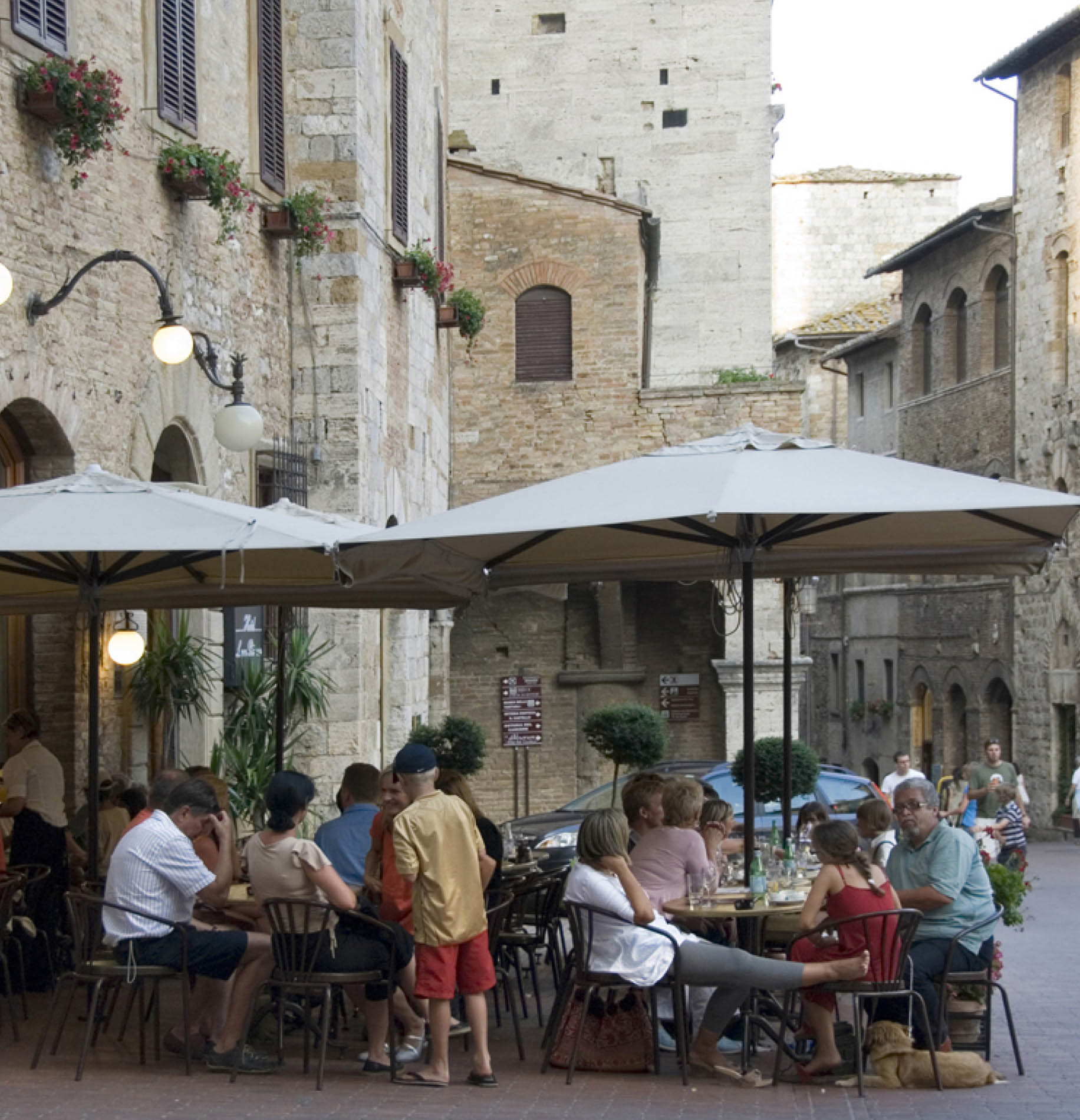
Dining in Piazza del Cisterna, San Gimignano
Cafés and Bars
These range from grand cafés with chandelier-lit interiors and terraces fringing some of the most spectacular piazzas in Italy, to modest local bars with zinc counters, steaming coffee machines, football posters and dusty plastic flowers. These unpretentious neighbourhood bars often have standing room only and are places to come for breakfast, a quick toasted sandwich or a swift shot of coffee. Some have a few tables outside for a more leisurely breakfast or apéritif, and you should find time at least once on your trip to dawdle over a Campari soda and olives in a traditional pavement café, watching life pass by.

L’Antica Bottega food emporium, Rocca Priora
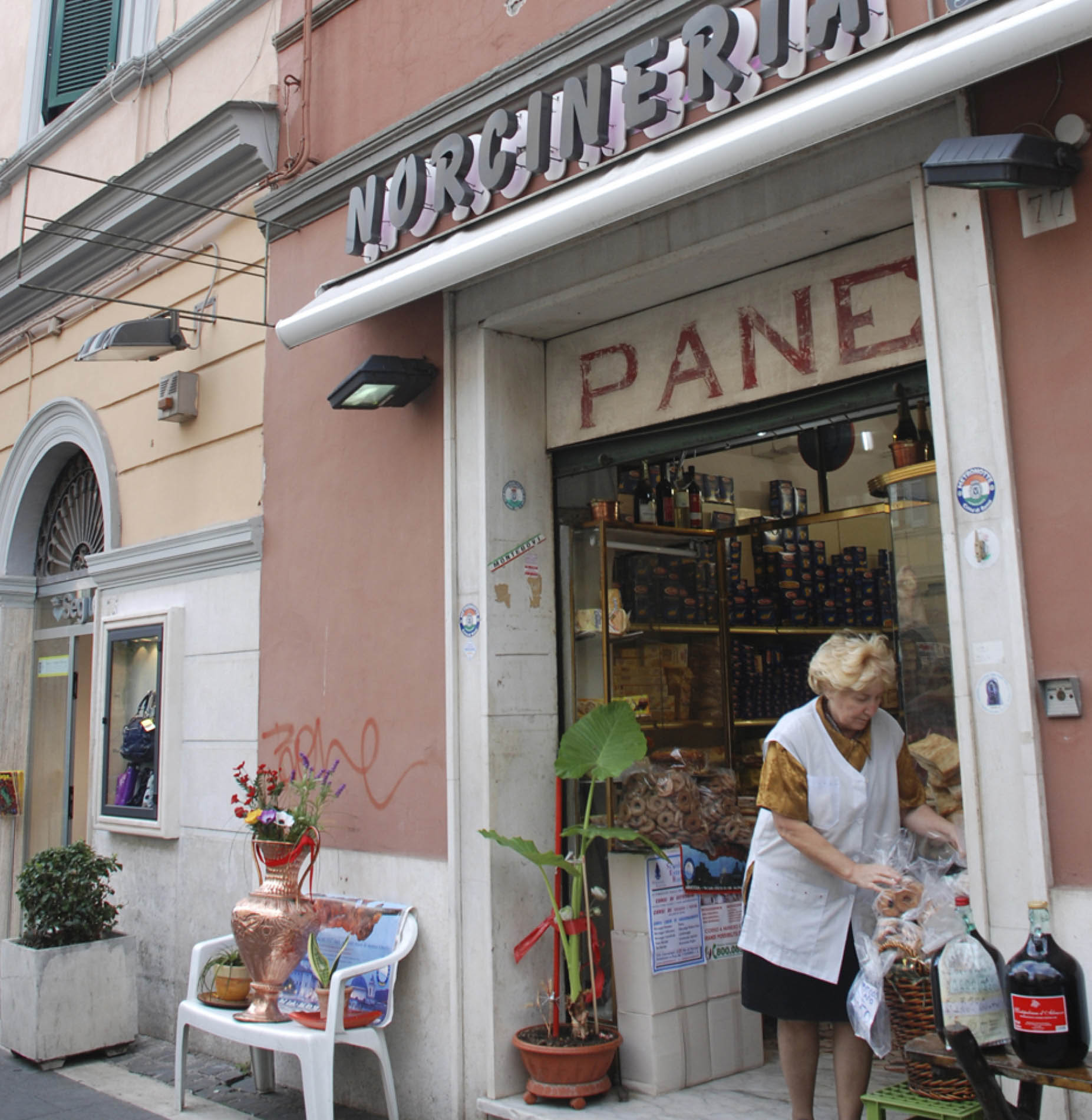
Norcineria (a butcher’s shop) in Genzano di Roma
Picnics
There is no better way of sampling local produce than to plan a picnic. It should not be hard to find a decent delicatessen (alimentari) where you can buy delicacies such as rosemary-spiked hams, salamis, cured tuna and swordfish, fresh ricotta, mature gorgonzola, olives, capers and sundried tomatoes, along with a decent bakery (panetteria, forno), and a greengrocer (fruttivendolo) or market (mercato) with seasonal fruits and vegetables.
Mountain regions often have picnic areas with massive outside grills, a great way of sampling a Chiavenna steak or a freshly caught red mullet. Look out as well for bars advertising a tavola calda (literally hot table). Here you can buy hot ready-prepared dishes, which will inevitably include a pasta al forno (oven-baked pasta).
Where to Eat | CONTENTS
DIRECTORY
RESTAURANT GUIDES AND ASSOCIATIONS
Gambero Rosso
L’Espresso
http://espresso.repubblica.it/food
Michelin Guides and Maps
Slow Food movement
Price categories
The following price bands are based on a three-course meal for one, including a half-bottle of house wine, cover charge, tax and service:
inexpensive – under €25
moderate – €25–€45
expensive – over €45
